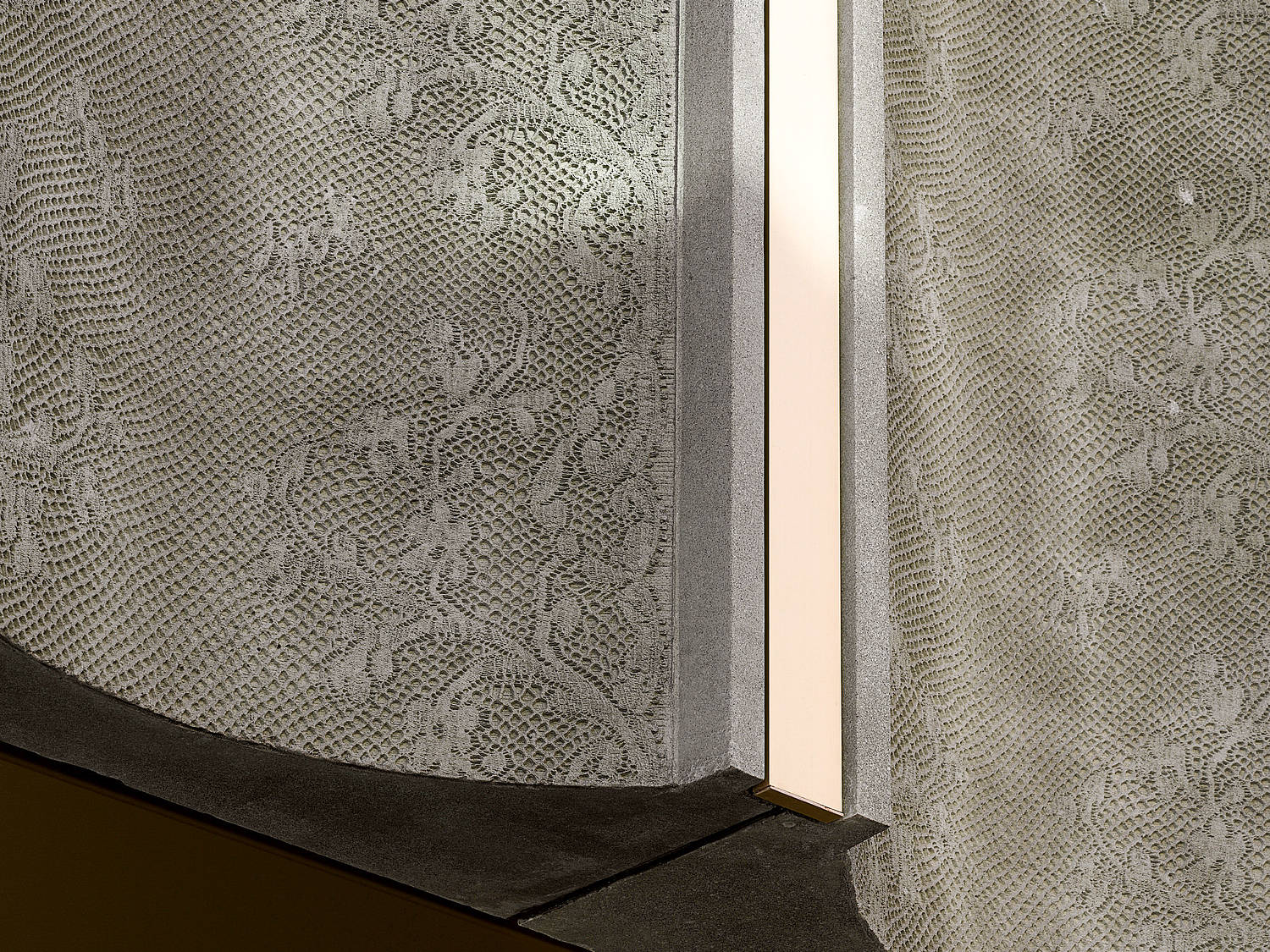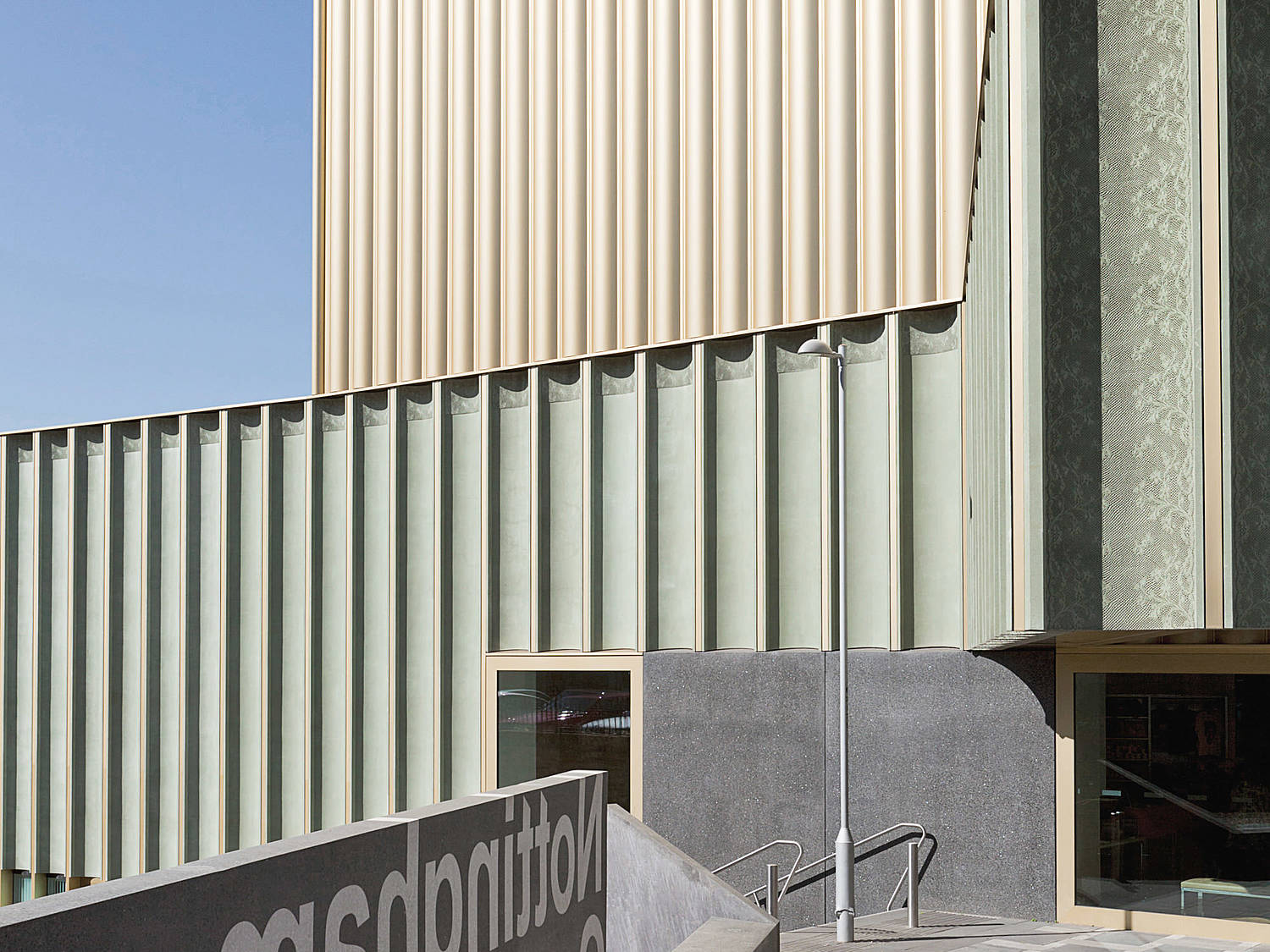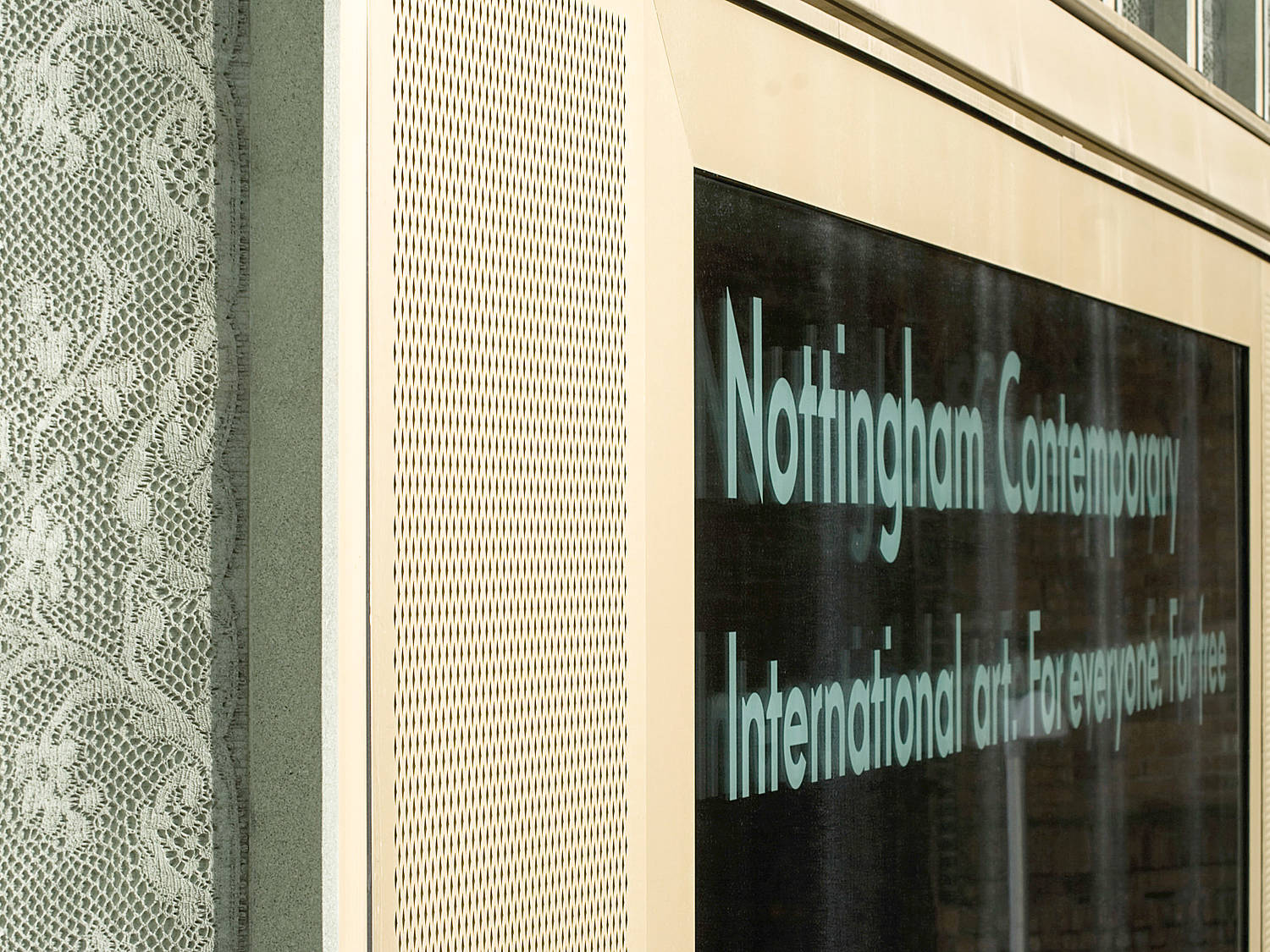Nottingham Contemporary, Nottingham, England
The Nottingham Contemporary is located in the immediate proximity of the Lace Market, where lace and crochet goods were traded at one time. The façade of the new building surprises with its detail-rich reminiscence of the neighborhood’s history.
Amid the entertainment district Lace Market in Nottingham, a cultivated lady has settled. In 2010, the art museum Nottingham Contemporary opened right next to a Unitarian church which was used as a bar and club. The 3,500-sqm large building accommodates exhibition rooms, smaller galleries, a lobby, a theater hall and archives, a black box as well as a café.
Yet Nottingham Contemporary is not only the home for pieces of art, it also presents itself as one. Voluminous blocks are stacked on top and next to each other while facing different directions. The colored arrangement of the façade structured the building: black concrete slabs at the base, jade-green precast concrete elements in the middle floors, and golden aluminum elements are attached above.
The jade-green concrete parts are adorned with a playful lace pattern which was formed into the concrete with RECKLI formliners. The individual façade is reminiscent of the district’s history: During the prime of the British Empire, the Lace Market in Nottingham was the global goods- and trade-square for lace and crochet goods.
For that reason, the architects chose an historical lace pattern for the façade which was typical for the local handcraft. In order to reproduce the detailed pattern in a true-to-detail way on the façade, RECKLI formliners were chosen.
The historical pattern served as the model for the positive cast, on to which the formliner was cast. It was glued into the casing before the concreting and impregnated ever detail of the lace into the hardening concrete. The lace façade envelopes the building, whose folded concrete elements remind you of the drapery of a piece of clothing. The otherwise prominent building is given more lightness and elegance through the delicate appearance of the façade.


